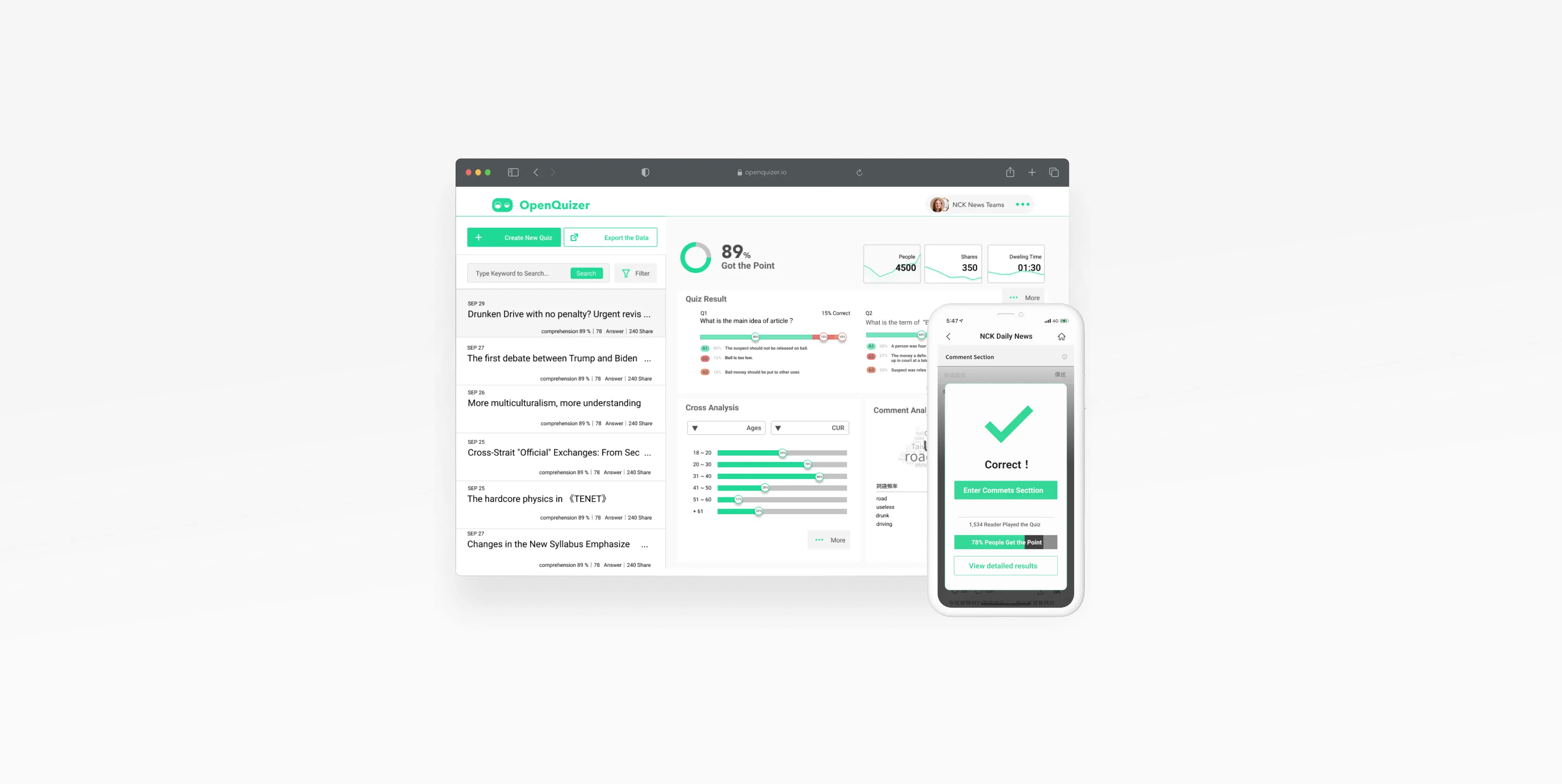

How can we reduce emotional comments in online message boards and improve the quality of topic discussions ?
Readers can take a reading quiz before leaving comments to increase their time reflecting on the article; readers can also learn about the distribution of people's opinions on specific issues from the statistical data of readers' answers to optimize the content.
Research, UX Design, Prototyping
CHIA-HSU HAUNG, MIN-JUM-ZENG
2020.10- 2021.12
🏅LINE Fresh 2020 Contest Hackthon — #13(Team 奔奔隊)
OpenQuizer is a comment system that reduces the troll comment on online media by allowing readers to play quizzes before see the comment sections, encourage the reader to think before commenting. Media and the author can use the dashboard to understand how readers interpret the content and the standpoint of readers.
With more than 80% of the population receiving news through the online media, the comment area has become an important place for public opinion. Many people are more emotionally charged when they comment, read the headlines without reading the text, or lack background knowledge of the text. According to the survey, more than 40% of respondents have been affected by online comments, and 60% are concerned about extremist comments on the Internet.
In that case, How might we reduce troll comments on online news websites in order to encourage people from different sapient to discuss social issues rationally?
In the 2.5 months of design,We use questionnaires to know online news readers comment experiences and conduct a competitive analysis to know how the exciting comment system handles troll comments. With the research result, we use Figma and HTML to build prototype.
Mainstream comment systems like Facebook provide the creator with powerful management and analysis features. Solutions like Know2Comment and Civil Comment use an innovative approach like quiz or crowdsourcing to reduce trolls but offer less incentive for creators to use. We want to combine the advantage of different systems to design a tool that reduces the troll comment and provides useful insight for the authors.
We used a 2*2 matrix to analyze different media, with “need for comment sections” as the X-axis and “need for comment section order” as the Y-axis. For example, “LINE Today”, a portal with high demand for comment sections but low demand for orderly comment sections, belongs to the first quadrant, “Initium Media”, a subscription-based media with thematic discussion forums, belong to the fourth quadrant. Paltform in the first quadrant have more difficulty maintaining the quality of user discussions due to the large number of users and traffic, but the relative user comments also have more valuable data for analysis and therefore have the potential to develop novel comment tools.
KANO model is an investigation technique that shows which feature is more important to users and has a higher priority for development. We collect 30 responses both from online news readers and media creators. Results show that “Trolls-Reducing” is important to the reader, and “Comprehension rate” and “Standpoint Classification” is more important to the creator.
OpenQuizer contained three parts. The website comment section for readers, dashboard and chatbot for media creators. The media can embed the comment section in an online news website. Dashboard and chatbot can provide deep data insight for media creators.
When the reader slides into the comment area, a two-question quiz appears , if reader choose correctly, comments section will be displayed. Reader who choose wrong answers have to waiting for three minutes to comment.
*
Every quiz has two questions; First question is about reading comprehension, and the answer is in the article. The second question is about key background knowledge of the article, like the law relative to the news. The pass rate of two questions can show how many readers have finished the article, understand the content, and know the key issues.